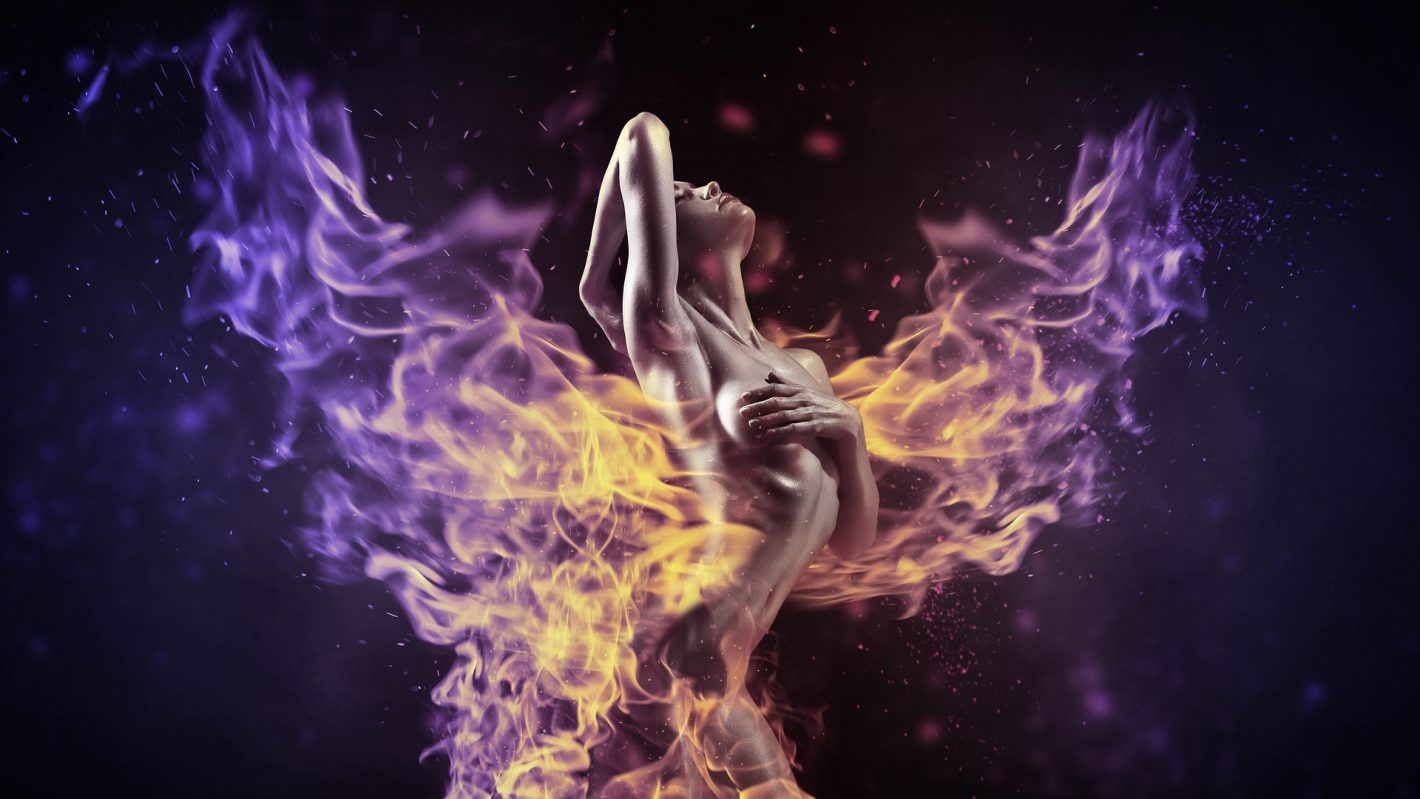The Psychology and Physical Effects of Colors
When I researched my Spectra Series, I discovered all sorts of interesting tidbits about colors. First, lets get into what colors are. What we think of as colors are wavelengths of light that bounce off things. Colors are determined first by frequency and then how those frequencies combine inside the eye. So, spectral power distributions exist in the physical world, but color exists only in the mind of the beholder. Now, let’s dive into the visible spectrum: ROYGBIV, red, orange, yellow, green, blue, indigo, and violet. At either end of this is spectrum are infrared (invisible long wavelengths) and ultraviolet (invisible short wavelengths). There you go; the basics of colors.
Humans have cones inside their eyes which are used to perceive colors. 64% of those cones respond strongly to red, 34% to green, and 2% to blue. Some birds and fish have four types of cones, enabling them to see ultraviolet light, and some insects also see ultraviolet light, which helps them see the patterns in flowers. The perception of these wavelengths has an effect on us mentally and physically. It seems as if colors, something we just view, shouldn’t affect us in any way, but when you think about them as wavelengths of light and then consider all the ways light can affect us, it begins to make more sense.
I’ve condensed my research for you below. In my books, I assign specific results (stopping breath, putting people to sleep, etc.) to individual shades but that’s artistic license. Here, I’ll give you the psychology of colors and the ways or parts of the body they can affect.
Blue:
Interestingly enough, only 2% of the cones in our eyes respond to the color blue. Despite that, it’s most people’s favorite color. Perhaps that’s because blue is the peace bringer, it lowers blood pressure, and treats migraines. It can affect the throat, ears, and mouth. It prompts our bodies to produce calming chemicals and it also focuses the mind. Weight lifters can lift more weight in a blue room.
Black:
Black is the color of authority, stability, power and strength. It’s associated with intelligence but it’s also a somber color, a color of grieving. Finally, it is associated with evil. All in all, a serious color.
Yellow:
When yellow is intense, it can cause tempers to flare and babies to cry. Conversely, when it’s soft, it causes the brain to release serotonin, making people happy. Depending on the shade, it can speed the metabolism, destroy depression, and treat difficult digestion. It can affect the stomach, liver, and intestines.
Orange:
Orange is a color of creativity. It stimulates creative thought and helps people come up with new ideas. It’s also linked to breathing and, oddly enough, stimulates breast milk production.
Red:
Red boosts sexual desire; just seeing the color makes the heart beat faster. It also gives energy, combats muscle and joint stiffness, and can affect the kidneys, backbone, and sense of smell. It’s associated with attraction, energy, movement (red cars appear to go faster), and life.
Pink:
Pink is another calming color but to the point of making people submissive. A lot of psych wards used to have pink walls for this very purpose. It’s associated with love and is thought of as a gentle color.
Green:
Green boosts the immune system. It’s the strength provider, empowering muscles, bones, and tissues. It also stimulates the creation of growth hormones. It’s associated with fertility, money, nature, generosity, good luck, and envy.
Purple:
Purple is the color of royalty. It’s reduces emotional and mental stress and helps promote sleep. It can affect the nervous system and eyes. It decreases sexual desire and stimulates brain activity used in problem solving. Young girls are most likely to choose purple as their favorite color.
Brown:
In India, brown is a color of mourning, but most associate it with reliability, stability, and determination.
White:
White is not a lack of color but the compression of all colors. It’s associated with purity, safety, and neutrality.
I hope this has given you a little insight into the very real affect that colors have on our life and perhaps inspire you to use them more effectively. At the very least, it may help you pick your next wall paint.
Would you like to have Amy’s blog delivered right to your inbox? Subscribe to her newsletter and also get a free copy of Wild Wonderland! Subscribe to Amy’s Newsletter here
(#ad)
